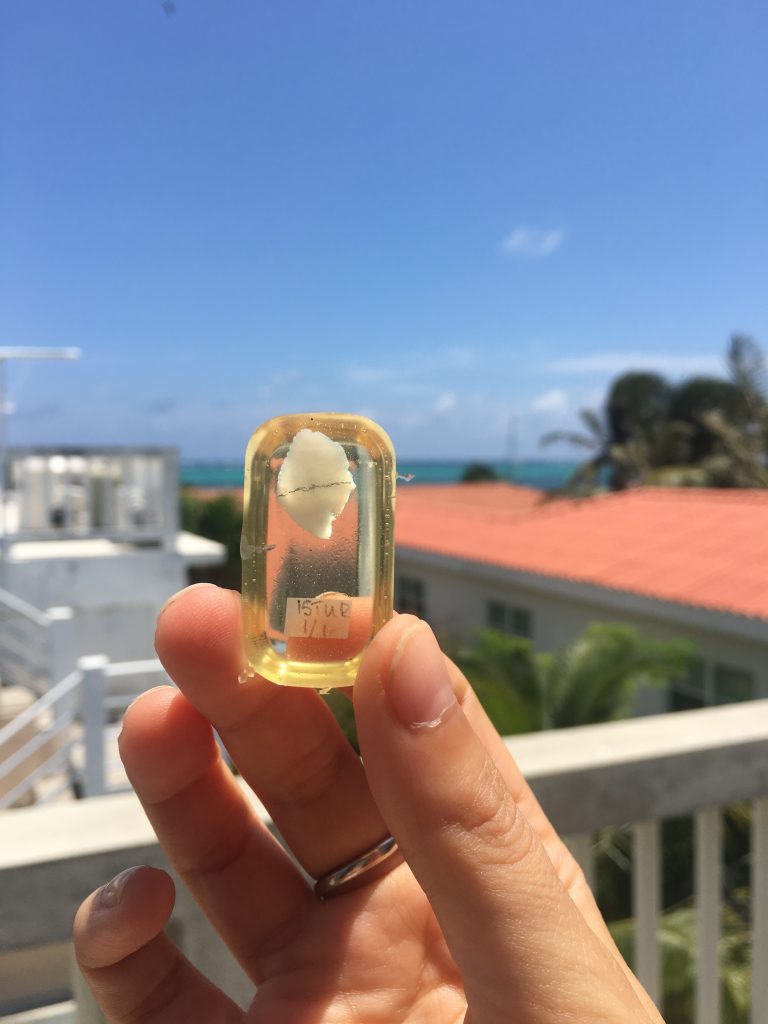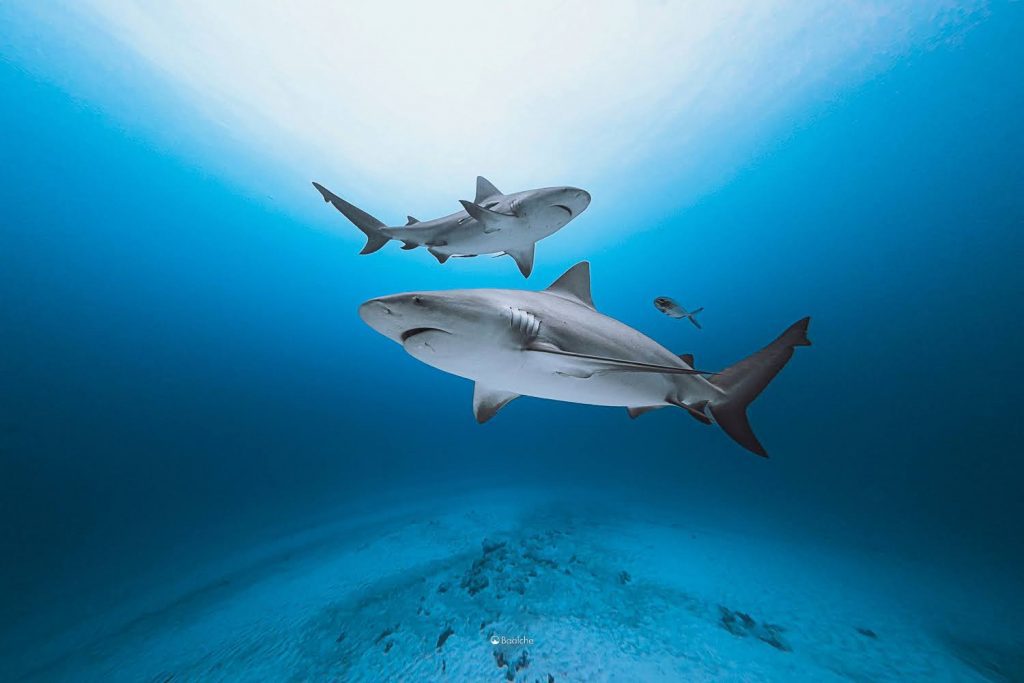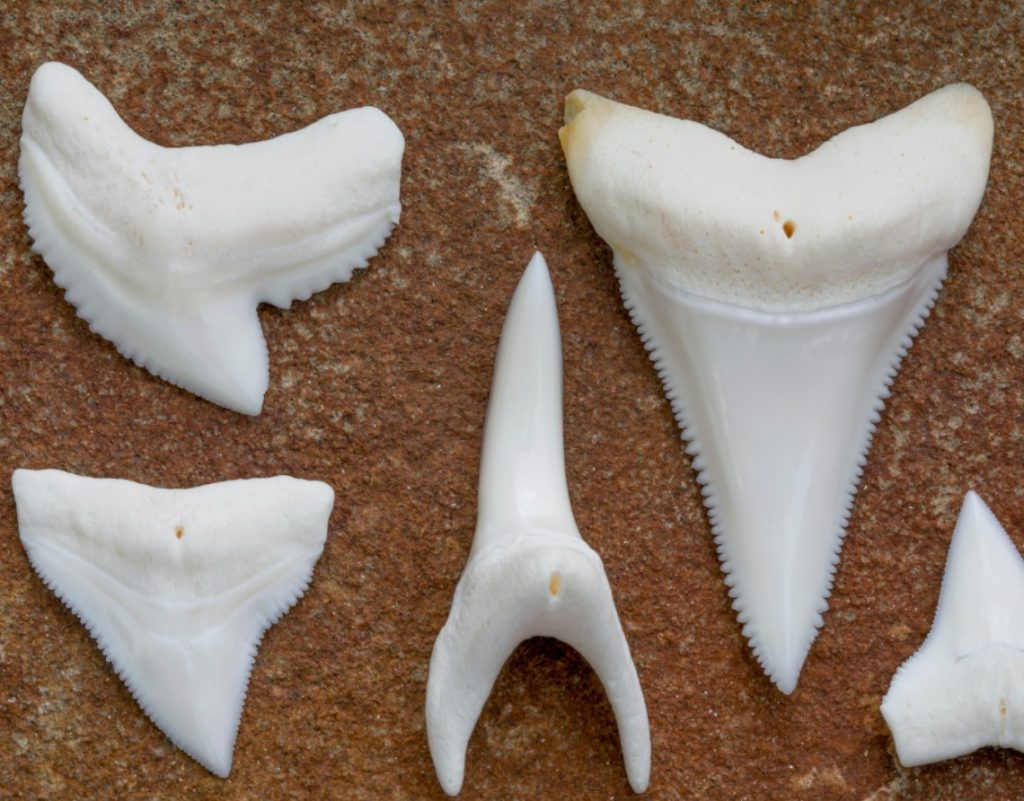 The earbones of a fish – called otoliths – have bands, just like trees, which reveal the fish’s age and other key markers from its life. These delicate, translucent structures are the focus of MarAlliance’s latest groundbreaking study of several deep-sea species’ life history. For this research, we set up a highly specialized lab to investigate the secrets that otoliths carry. We take measurements such as length, width, depth and the weight of the otolith, and use thin-sectioning techniques to examine the otolith rings (see photo story), to give us a robust estimate of the fish’s age and other characteristics. This information will assist in determining the best ways to protect fish populations and ensure that fisheries will continue to thrive throughout the region. At the same time, we are exploring lower-cost solutions to obtain the same critical data.
The earbones of a fish – called otoliths – have bands, just like trees, which reveal the fish’s age and other key markers from its life. These delicate, translucent structures are the focus of MarAlliance’s latest groundbreaking study of several deep-sea species’ life history. For this research, we set up a highly specialized lab to investigate the secrets that otoliths carry. We take measurements such as length, width, depth and the weight of the otolith, and use thin-sectioning techniques to examine the otolith rings (see photo story), to give us a robust estimate of the fish’s age and other characteristics. This information will assist in determining the best ways to protect fish populations and ensure that fisheries will continue to thrive throughout the region. At the same time, we are exploring lower-cost solutions to obtain the same critical data.
Otoliths are amazing study material because they reflect the fish’s environment and life, its age, and how fast it reaches critical life stages like reproductive age. Our current research specifically targets the deep-sea species, because they tend to live longer and reproduce at a much older age than their shallow-water counterparts. Very little is known about the lifespan and growth rates of deep-sea fishes worldwide, and especially in the MesoAmerican Region. Our findings will fill a sizeable knowledge gap.
Our study focuses on deep-water groupers (family Serranidae) and snappers (family Lutjanidae), as these are the most commonly captured species in the region’s deep-sea fisheries. Groupers are often the first to be overexploited, as they are long-lived and grow to be very large. Analyses of otoliths of Yellowedge Grouper captured in the Gulf of Mexico show they can live up to 80 years. We are also studying four deep-water snapper species: Queen, Wenchman, Silk, and Blackfin Snappers. We suspect that Queen Snappers may be fairly long-lived based on preliminary work by colleagues in the Pacific. However, little research has been done on the other snapper species. Wenchman are captured frequently in the deep-sea fisheries in the Caribbean, while the Silk Snapper is probably one of the most important species in the region, especially in Belize, because it is heavily targeted.
The photo story below describes the method used to unveil the otolith’s secrets.
[foogallery id=”4557″]
This technical project requires highly specialized equipment and materials that are often lacking in many Caribbean countries. The costs to outsource the type of otolith research we are performing are often beyond modest fisheries’ research budgets. MarAlliance is looking for affordable and high-quality solutions for science and funding in tropical countries to address this problem, in collaboration with Sea Leucas, a multi-disciplinary consultancy company based in the region that provides fisheries science support.
We are exploring a range of cost-effective methods that can be used as a proxy for determining a fish’s age range, including whether using just one of the otolith measurements, such as its weight, will provide a reasonably-accurate estimate of the age of the fish. In this way, once all the data are validated, countries with limited research budgets will have a low-cost technique for determining the age of a fish that is easy to implement and will become an invaluable method for countries that need more data to understand and manage discrete stock structures of vulnerable fish.
Research partners include the National Oceanic and Atmospheric Administration (NOAA) National Marine Fisheries Service (NMFS). Our findings will feed into an ecological risk assessment for fisheries to inform management, conservation and government stakeholders in the MesoAmerican Region about which species are most threatened by overfishing. Final findings will come out in three years’ time. In the meanwhile, look out for papers we will be publishing based on the ongoing research.



